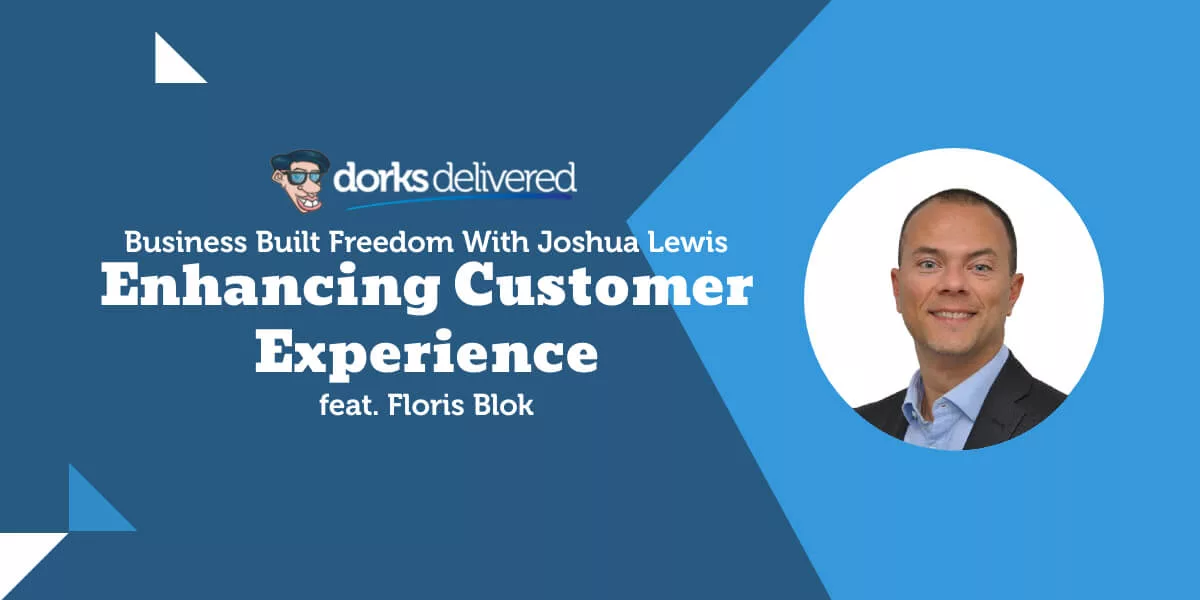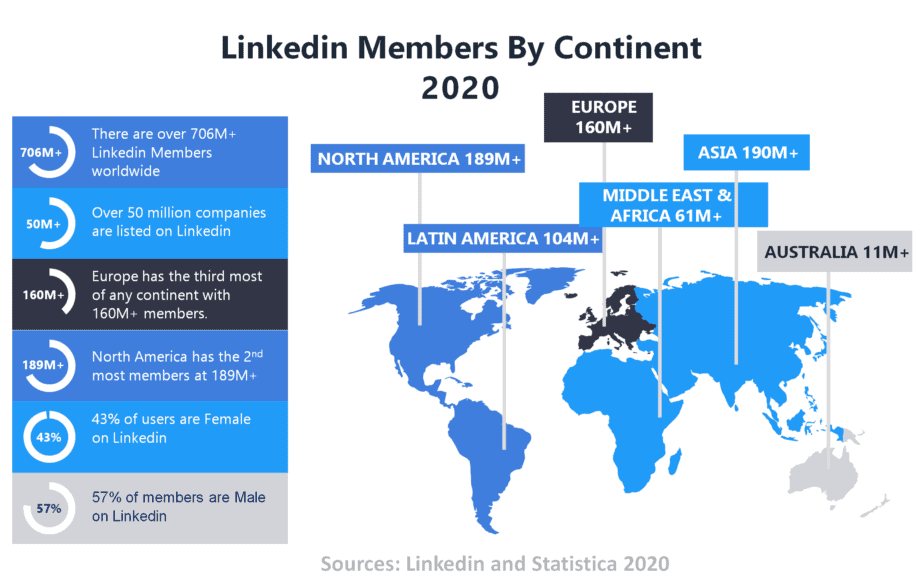You might be wondering why customers sometimes love you and sometimes don’t. Floris Blok from Blok Business Consulting is a customer experience expert who took the time to sit down with Josh and talk about the customer journey, the customer experience, and what it all means. Read on or listen to the Business Built Freedom podcast below to learn how to improve and measure customer experience, and what to do if you feel overwhelmed.
What is customer experience?
To figure out what the customer experience is, you need to understand who the customer is. If you’re trying to sell something to someone, you want to know who they are before you try and sell them anything. That would be your first point of call or a call to action as an organisation, as a marketing department or whoever you may be. Understanding the Ideal Customer Profile (ICP) is actually the first thing that you need to do.
Once you have a deep understanding of that, like a group of people or certain demographics or psychographic segmentation, then you can start understanding where they get their information, where they go out and buy stuff, what it is they are interested in, what makes them tick. Once you’ve figured that out, you can expand and build that customer journey or at the very least identify what the customer journey is through all kinds of different ways of research and analytics.
Afterwards, you can start optimising each of those touchpoints that you have with that particular segment’s ICP. There are different KPIs that you can measure. For example, if you have an e-commerce platform, one way is to use KPIs such as how many people dropped out from your website once they’ve done a search or how many people leave a basket with stuff in it and don’t actually convert to an actual sale.
How do you identify your ideal customer?

For example, if the data says that you’ve got a meat pie that sells more than a cheese pie, you’re more likely going to start buying in more stuff for the meat pie and making more meat pies and having them on hand, especially if you’ve got another data point that says that you’ve run out of them halfway through the day. A lot of this can happen quite instinctively with a lot of people.
Now we’re taking an example and we’re applying it to a lot more complex processes, but principles are the same. If you have a pie that sells really well and it goes out of stock midday and you still got people coming in asking for it, then you’ve got a great set of customers that know what they want. If you run out of it, that means that you haven’t forecasted enough of that product. Now you’re delivering a very bad customer experience. All of a sudden, you end up having to offer an alternative product, maybe even at a discount just to keep the customers happy and coming back through the door the very next day.
Stay ahead of the competition through technology. Let’s talk about your business!
Remember the data
If you have the data and you can see where the data is actually, providing you insights. Information, knowledge and insights are three different things. Information leads to knowledge, and knowledge leads to insight, which is then applied into action in a business sense. You can translate that into future actions in order to improve.
Data analytics can be very simple. It could be just you sitting there at the end of the day looking at your cash register or your receipts and looking at the number of pies sold and left. That’s enough to give you an idea. It doesn’t have to be as complex as an ERP system hooked up to a CRM that’s tracking your website.
How to improve your business
1. Focus on the foundation
We can go back into marketing terms like customer acquisition cost and all these intricacies that business consultants love to talk about, which is all optimisation. This is all fine-tuning. This is all taking the basics that you have in place and just making them slightly better.
If you don’t have the right foundations, you’re basically just amplifying something that’s not good. It’s essential to have the foundations in place. Once you have these, then you can optimise and start looking into more details.
Customer experience and marketing are very close to each other, but it’s all about testing. You’ve got the basics in place. If you do this, what will happen? You can do A/B testing.
Let’s say you chose to sell pies in Location A on Wednesday, and you earned $100,000. You went to that same location on Thursday, and you earned $80,000. So, you know that it’s probably best to be there on one day and choose another location on the other day. It’s about taking that data, analysing the data, finding insights out of it, and then applying it to whatever it is that you do.
Let’s make it easy for you to collect and analyse data!
2. Keep a record of everything
What can be tracked can be managed, and what can be monitored can be managed. If you’re not monitoring your income, even the ATO is going to come to you.
The same principle applies to everything else. If you want to be good at what you do, you have to be able to track it, monitor it, and then draw conclusions from it or insights and turn those into business applications.
A lot of the time, we try and think that we do A and B happens, but there could be a whole bunch of different things. Like on the Wednesday-and-$100,000 example, maybe there was a huge conference just around the corner and you had a lot of people that came out.
3. Gather data until you get a pattern
If you’ve picked up that on that Wednesday, you made $100,000 in front of that location or at that location, that same location made $80,000 a week later, and you made $120,000 the week afterwards. It averages out quite nicely, but why were there differences? Is it just normal everyday life or were there events during that? Observe the data points.
The more data points you have, the more accurate your insight could be. But now that you have them and if you have a curious mind, which every entrepreneur should have, then you can start investigating what was happening at that location or within a kilometre or a two-kilometre range of that location.
For a large corporation, it’s becoming easier to actually take all of these different data points into account because they can throw it into a machine learning algorithm and then something will pop up that says, ‘Hey, you’ve done really well on this day because you had the high exposure for the number of people that were walking on the street.’
If you were a small organisation, you can do quite a lot of this quite manually and all you need is Google for your searches and YouTube, which is the second-largest search engine in the world, for your how-tos, in case something doesn’t jive really well or you need some help with some piece of software or whatever.
Improve customer experience with the help of technology. Find out how!
4. Ask the right questions
All you need is a curious mind. Ask yourself all of the right questions. If you are going down the route of the back questions, it’s good to have some sounding boards, a coach or consultant or anyone that you have on retainer for a once-a-month check-in or accountability sessions.
Entrepreneurs sometimes might get a bit slack. They can lose their motivation for a day. It’s not easy being an entrepreneur. It’s not easy setting up a business. You could lose. It takes a lot of mental energy. If you have a bad day, it could impact your business. If you have employees, that could impact your employees. Having that support structure from a consulting perspective is quite helpful, but it’s about asking the right questions.
5. Get an extra pair of eyes
As a consultant and an entrepreneur myself and as an ex-corporate myself, I have the experience and the passion, if you wish, to help people to get the answers and achieve the success they want. I’m focused quite a lot on marketing strategy, customer experience and digital transformation. When I say digital transformation, I’m not talking about IT stuff. I come at it from a commercial and business point of view.
Digitisation, digitalisation and digital transformation are three different things. Digitisation is basically analogue to digital. Digitalisation is looking at your value proposition. Digital transformation is when you look at the entire structure of the company—its culture, people, processes and technology in that order. That’s where I focus on as well, and that fits quite nicely with marketing strategy.
Improve customer experience with the help of technology. Find out how!
Breathe, think it through, and move forward
If you’re a budding entrepreneur, if you’re starting out, it might feel overwhelming. Focus on your breathing. I tell that to all of my kids and my wife, and I use that technique. When you get overwhelmed, whatever the reason, slow down, breathe, think it through and then move forward. That applies to business, sports, even tests. Focus on not getting overwhelmed. Don’t overthink.
Even now at my age, I’m still learning to listen to my gut. The older I get, the more I want to listen to it and the less I want to use my head because my head sometimes can go off on many tangents. Instinct is one of the crucial factors in business that cannot be monitored or quantified, but it shouldn’t be underestimated.
Set up your business for success. Let’s talk about your business!
[module-379]
































